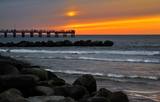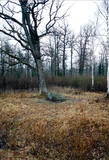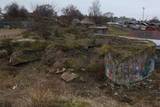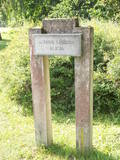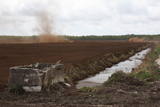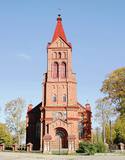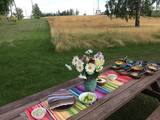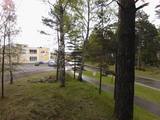| Nr | Name | Beschreibung |
|---|---|---|
|
Im Zentrum von Lielvārde, nur 5 Gehminuten von der Daugava entfernt, befindet sich eine Schnellgaststätte mit einer abwechslungsreichen Speisekarte. Lettische Küche: Kalte Suppe, Suppe aus frischem Kohl, gebratener Karpfen oder Wels, Frikadellen, Braten, graue Erbsen mit Speck, Pfannkuchen. |
||
|
The craftsmen's association unites 65 craftsmen from Rūjiena and its surroundings. Offers baking, jam cooking, cheese tying, jewelry making, leather goods, crochet and culinary master classes. Also offers "Made in Rūjiena" tastings (bread, smoked products, culinary products, jams, fresh juices, pumpkin products, seasonal berries and fruits, other dishes in each season) and shopping. |
||
|
Palanga is known to be the biggest by-the-sea resort in Lithuania because of its seacoast's main attractions - dunes and white sand. And because Palanga is a resort there are plenty of cafes, restaurants, bars and more for those who would like to enjoy a meal or a drink, for those who like active sport - there is possibility to cycle, go horseback riding, swim and much more. |
||
|
This territory was established to protect the lovely central section of the Neries River, local species, and Lithuania’s largest oak forest.
|
||
|
Der Ķemeri Nationalpark wurde 1997 gegründet und umfaßt vor allem Feuchtgebiete – die flachen Küsten der Rigaer Bucht, einen überwucherten Küstensee, riesige Sümpfe, feuchte Wälder, Moore und überschwemmte Wiesen. Der Nationalpark ist enorm wichtig für den Schutz der Pflanzen (25% der in Lettlands Roter Liste erfaßten Pflanzen findet man hier) und Tiere, besonders Nist- und Zugvögel. Das Große Ķemeri Moor ist eins der größten Moore in Lettland. Es gibt auch andere, wie das Zaļais und das Raganu Moor. Die gewaltigen Moore sind auch wichtig wegen der Schwefelquellen und dem Heilschlamm. Für das einst berühmte Ķemeri Kurbad war das die Grundlage. Die meisten der kulturellen und historischen Objekte im Ķemeri Nationalpark stehen in Verbindung mit der Meeresküste als Ort für Freizeit und Erholung. Es gibt Naturlehrpfade, Fahrradrouten, Wanderwege, Vogelbeobachtungstürme und andere Einrichtungen. Das Besucherzentrum befindet sich im kürzlich renovierten „Meža mājā” (Waldhaus) in Ķemeri.
|
||
|
Von einem 60 m hohen Hügel eröffnet sich eine der schönsten lettgalischen Landschaften und ist der 2 km weit gelege Rāzna-See zu sehen. Die Ruinen der im 13 Jh. gebauten Burg. |
||
|
Das Café befindet sich im 67. Kilometer der Straße Riga – Liepaja (A9). Es ist ein von Reisenden beliebter Ort für Mahlzeiten. Lettische Küche: Ampfersuppe, eingelegter Hering mit Quark, ländliche Mahlzeit (Kartoffeln, Ei, geräuchertes Fleisch, eingelegte Gurke), Schweinefleischfrikadellen, Stroganoff der Region Kurzeme, geschmortes Sauerkraut mit Jagdwürsten, Gerstengrütze mit Fleisch, Roggenbrotcreme, Brotsuppe mit Schlagsahne. |
||
|
In Bolderāja – östlich von der Lielupe Straße und südöstlich von der Jātnieku Straße am Ufer von Daugava sind Überreste von vier in die Luft gesprengten Batterienpositionen erhalten geblieben. Diese Batterien, in denen Geschütze des Kalibers 152 aufgestellt waren, sind einen Teil vom ehemaligen Fortifikationssystem von Riga (siehe auch Komētforts, Festung in Daugavgrīva, Fortifikationen in Mangaļsala). Das Ziel der Batterien war die Stadt von den Angreifer, die von der Meeresseite kämen (kamen) zu schützen. Von dem Oberteil der Batterien ist der Fluss Daugava und neu aufgeschütteter nördlichen Teil des Russischen Insels (ein riesengroßer Sandberg). Der Zustand des historischen Denkmals und der Umgebung des Denkmals ist mehr als schlecht...
|
||
|
Der Fluss ist klein, aber hat ein großes Tal, das von der Straße Vecumnieki – Ilūkste durchquert wird. Der Name des Flusses Vilkupe ist mit dem ehrgeizigen Plan des kurländischen Herzogs Jacob verbunden, die Flüsse der Flussbecken von Daugava und Lielupe zu verbinden. Die Arbeiten an dem Verbindungskanal wurden angefangen, aber das Projekt wurde nicht realisiert. Der Fluss Vilkupe war in diesem Projekt als ein Teil des Verbindungskanals vorgesehen. In Bezug auf diese Tatsache ist es wert, über die Größe der Ideen und Innovationen eines kreativen mittelalterlichen Menschen nachzudenken. Ungefähr 4 km von der Ortschaft Vilkupe ist ein Fragment des Kanals markiert und zu besichtigen. |
||
|
This is a view worth a journey from a distance. This is an impressive terrain for Latvia, and here you will see as far as the Hanja highlands of Estonia, where the Great Munameģis Hill – the highest surface in the Baltic States – can be found.
|
||
|
Das Alleezeichen im Park von Ķemeri von
Janis Lībietis. J. Lībietis war der Leiter der
Staatlichen Schwefelquellenbehörde von 1928
bis 1944.
|
||
|
Im Betrieb Teearu werden verschiedene Gerichte vom Fisch aus dem Peipussee zubereitet, besonders ist die hier gemachte marinierte, geräucherte Brachse beliebt. Die Besucher können auch das nach den traditionellen Methoden gemachte Rauchfleisch probieren. Man kann auch Verpflegung bestellen. |
||
|
The cafe is situated in Stende, approximately 12 km away from Talsi. |
||
|
Nature restricted area is established to protect various wetland habitats – Big Kirba Bog and protected plant species within it. Only the West part of the Bog is a protected nature area. The rest of the bog is used mainly for intensive extraction of peat and large cranberry cultivation. Nature restricted area of the bog has no tourism infrastructure therefore is not useable for tourist visits.
|
||
|
St. John the Baptist Roman Catholic Church of Ciskādi was built approximately in 1990. The brick building is an example of Romanesque style.
The church has a specific icon called „Madonna and the child”, crucifix and the
organ.
|
||
|
Eine Floßhauptstadt Lettlands mit dem jährlichen Flößerfest im Mai. |
||
|
35 m wide and 0.5 m high, the
|
||
|
The barrow which offers a good view is at the northern end of the Dunduri meadows – at the end of Melnragi. It is an artificial barrow which follows along with the bed of the little Slampe River. The meadows are home to livestock allowed to live in the wild, and you can see a bit of the restored Slampe. The view is particularly interesting during flooding season, when the surrounding wetlands become saturated. This is a location for bird-watching.
|
||
|
Ičas apmetnes ciems ir sena dzīvesvieta Ičas upes krastos. Apmetne atklāta 1937. gadā. Tā bijusi apdzīvota neolītā (4500 - 1500 pr.Kr.) un bronzas laikmetā (1500 - 500 pr.Kr.). Apmetnē dzīvojuši amatnieki, zvejnieki, mednieki.
|
||
|
In der Biographie von K. Valdemārs ist ein bekannter Fakt, dass im Sommer 1839 die Lehrer und Schüler der Volksschule von Lubezere einige Tage am Meer verbrachten – in einer 19 Wersten entfernten Siedlung Roja, wo später unter Vermittlung von K. Valdemārs eine Seefahrtschule gebaut wurde. Das erste Treffen mit dem Meer machte einen atemberaubenden Eindruck auf den Jungen. “Ein großartiger Meeresanblick traf den Jungen wie ein Stoß ins Herz, dass er alle drei Tage nichts anderes dachte, als über großartiges Meer, bei dem mit einer kindlichen Echtheit schon damals einen Plan bzw. Projekt ausarbeitete, auf welche Weise man am Fluss von Roja einen tieferen Hafen für große Boote und kleine Schiffe errichten könnte.” Kr.Valdemārs. (Die Quelle: Roja TIZ) |
||



